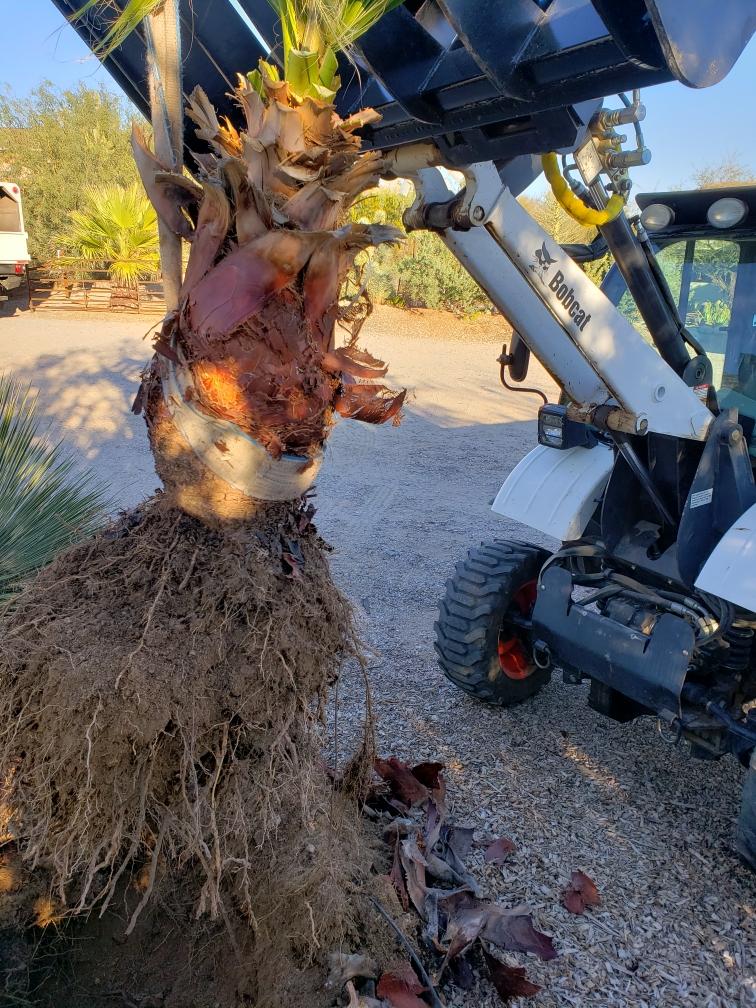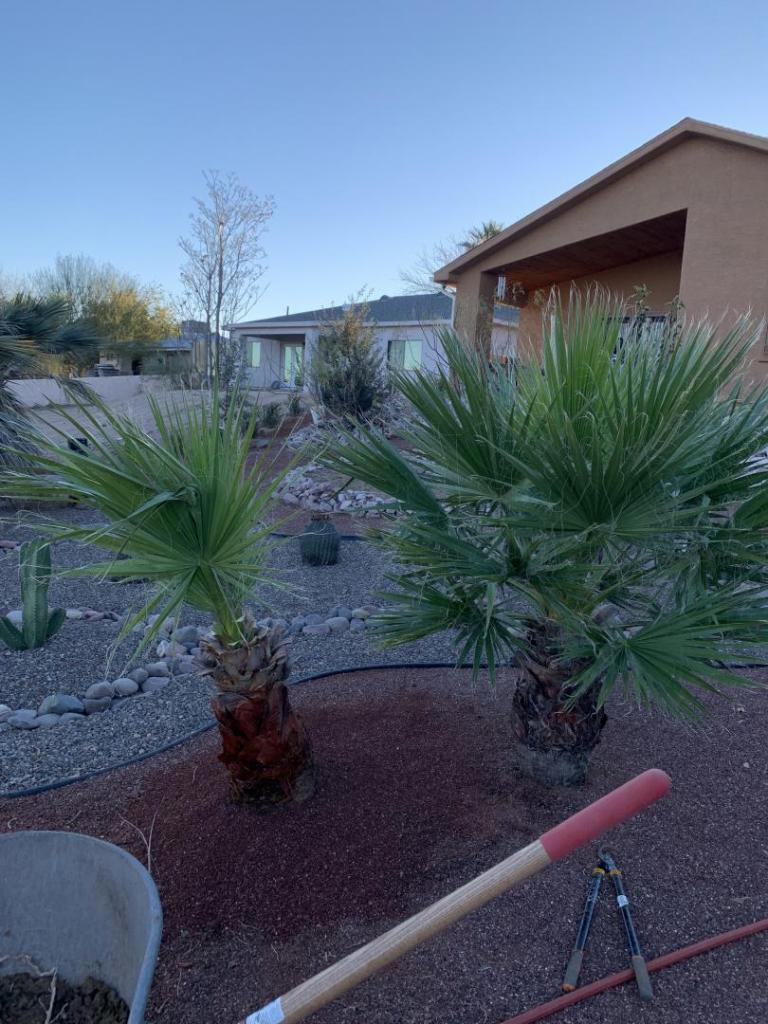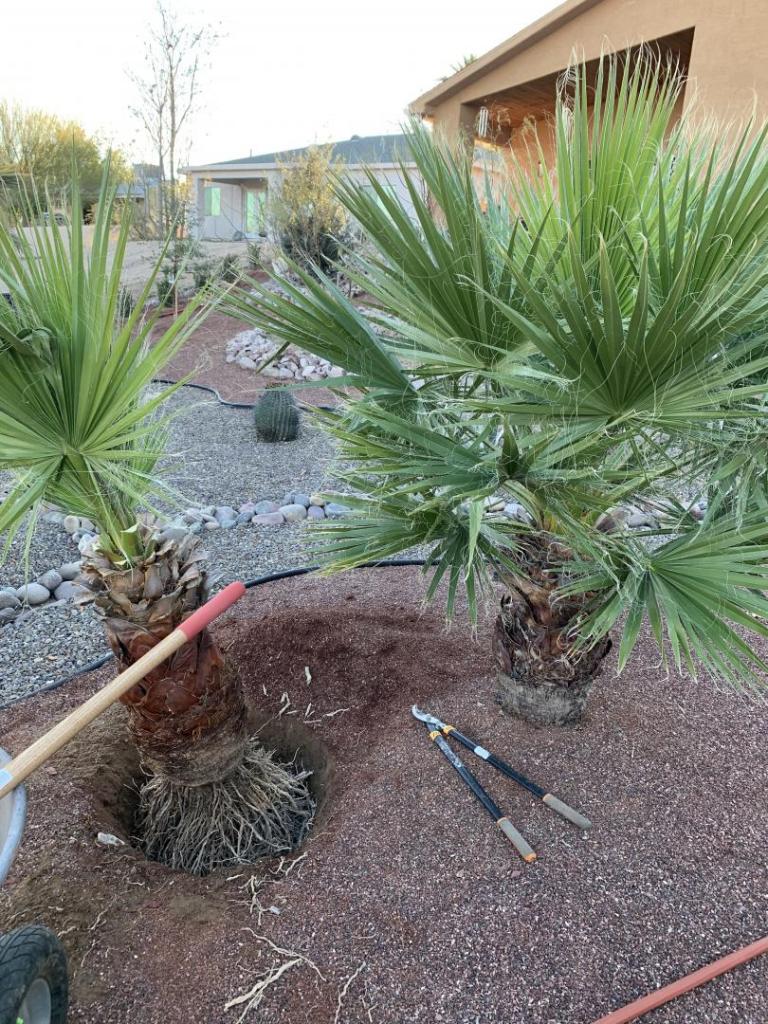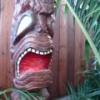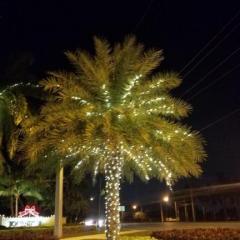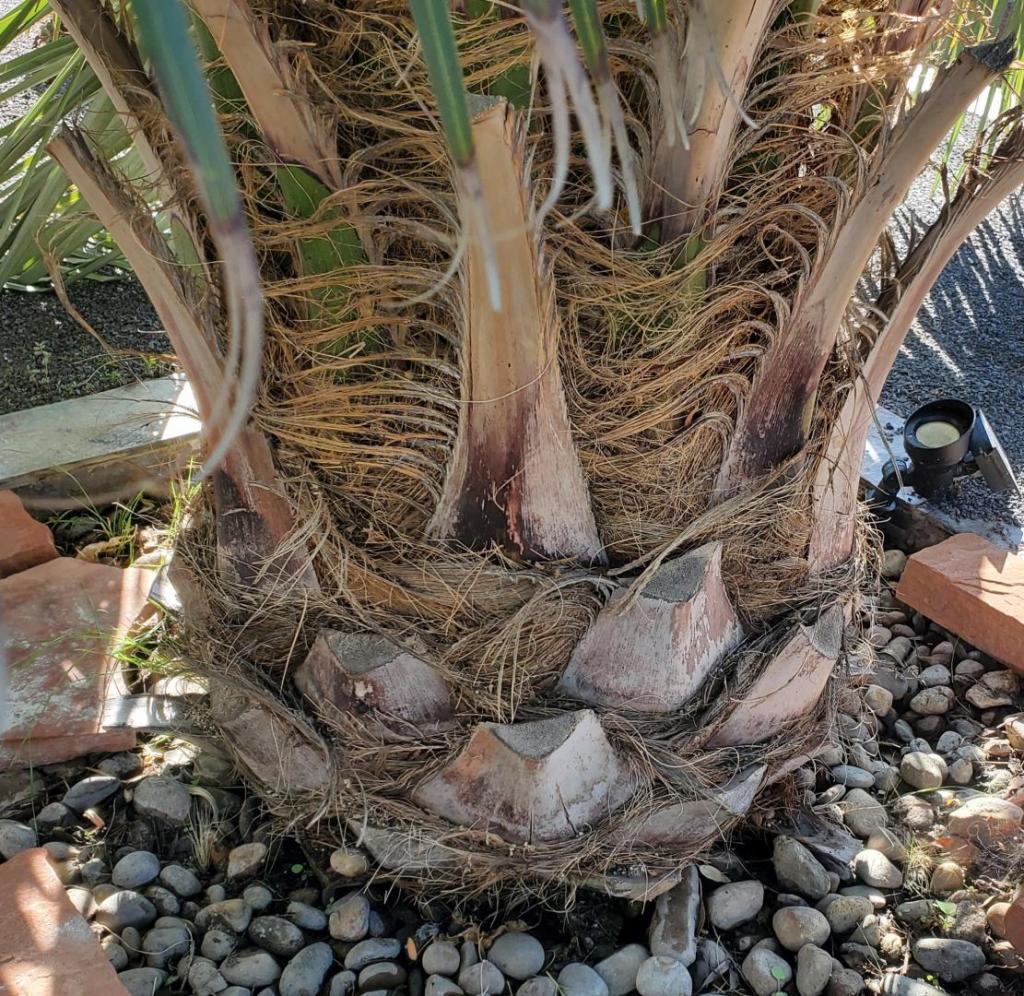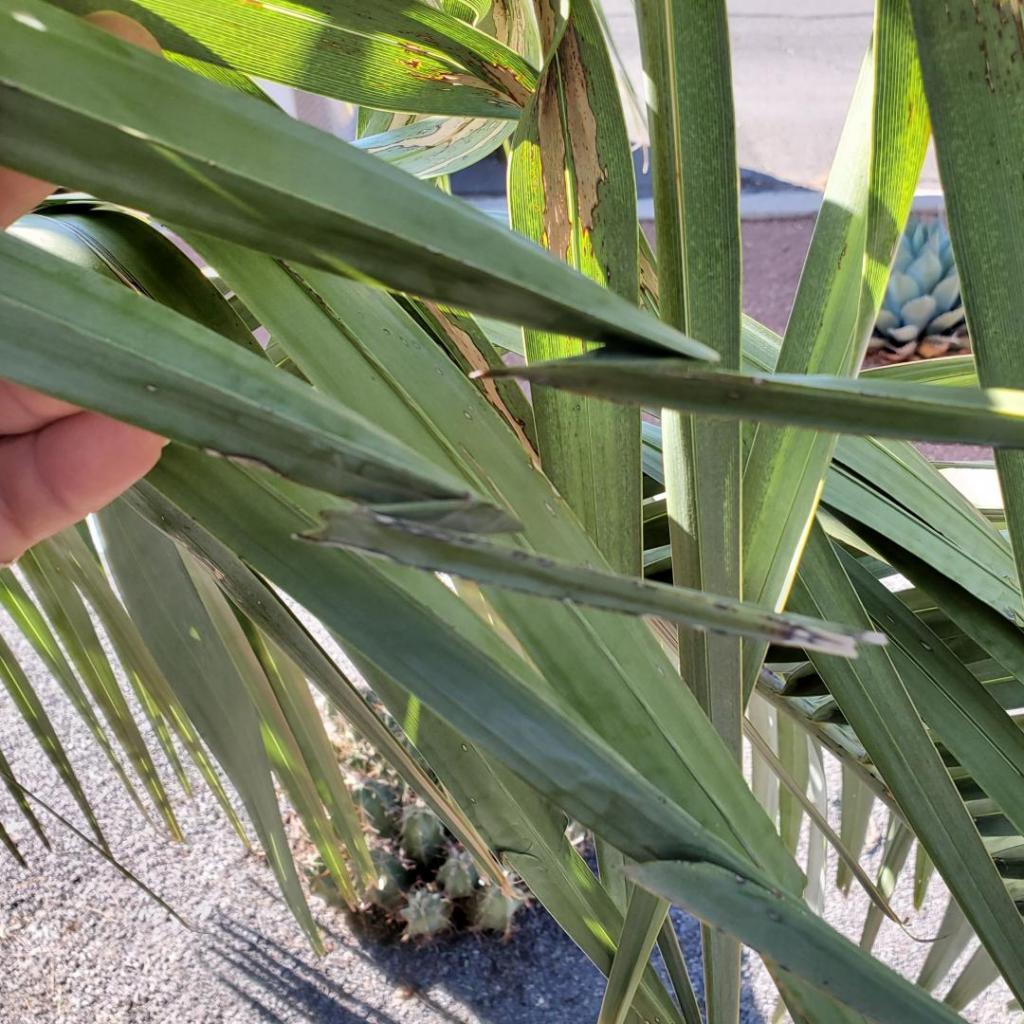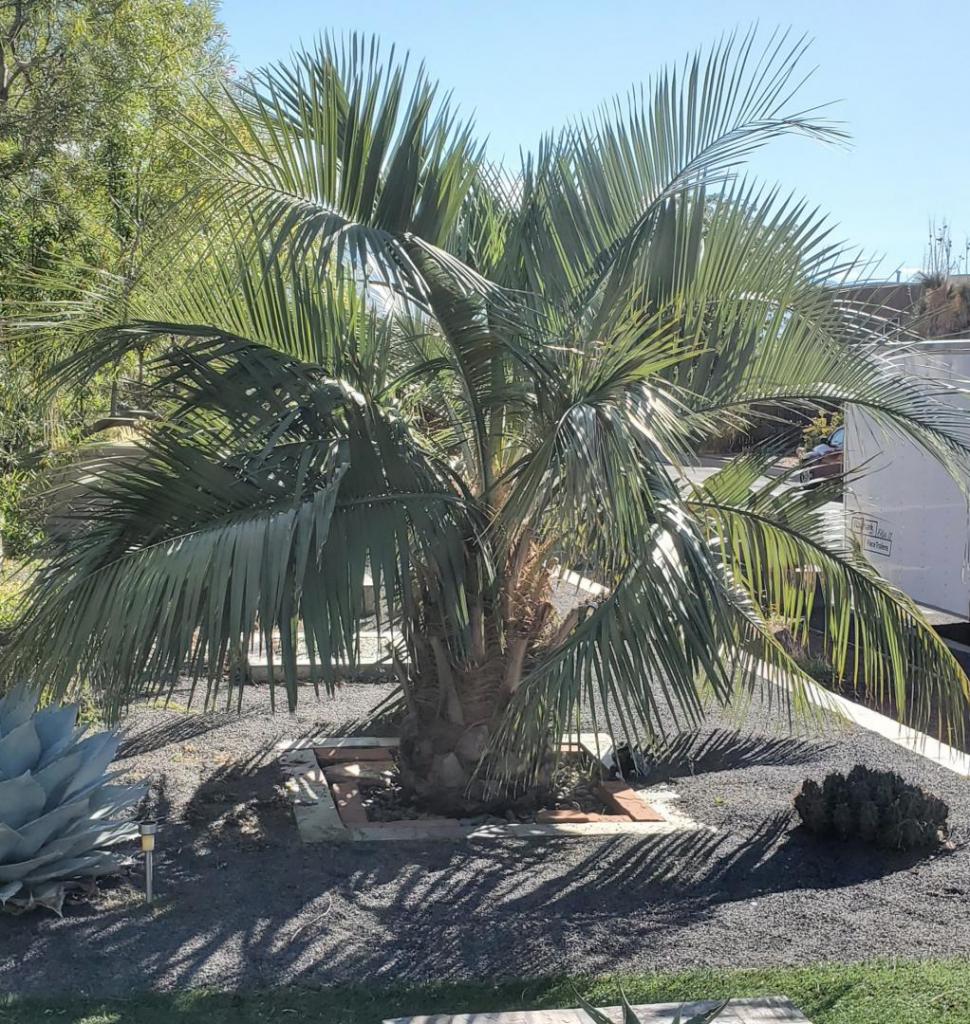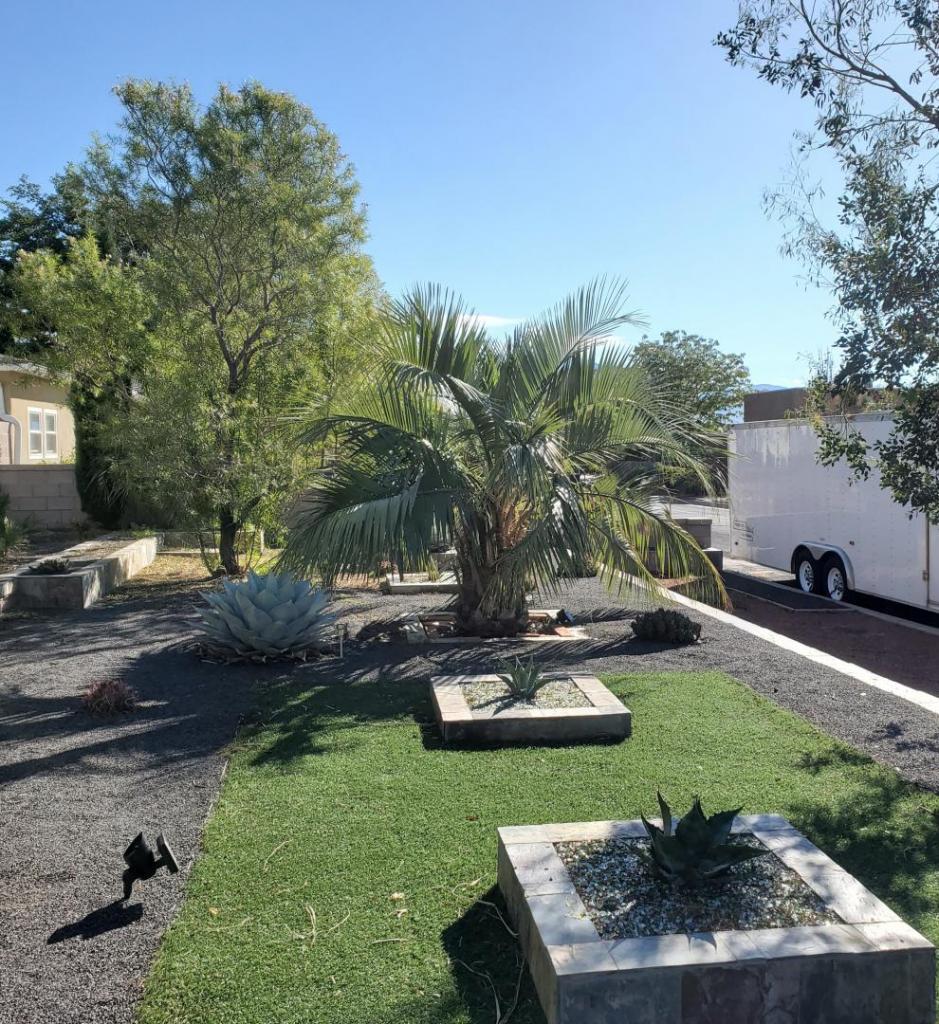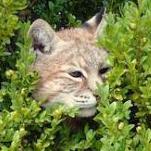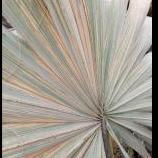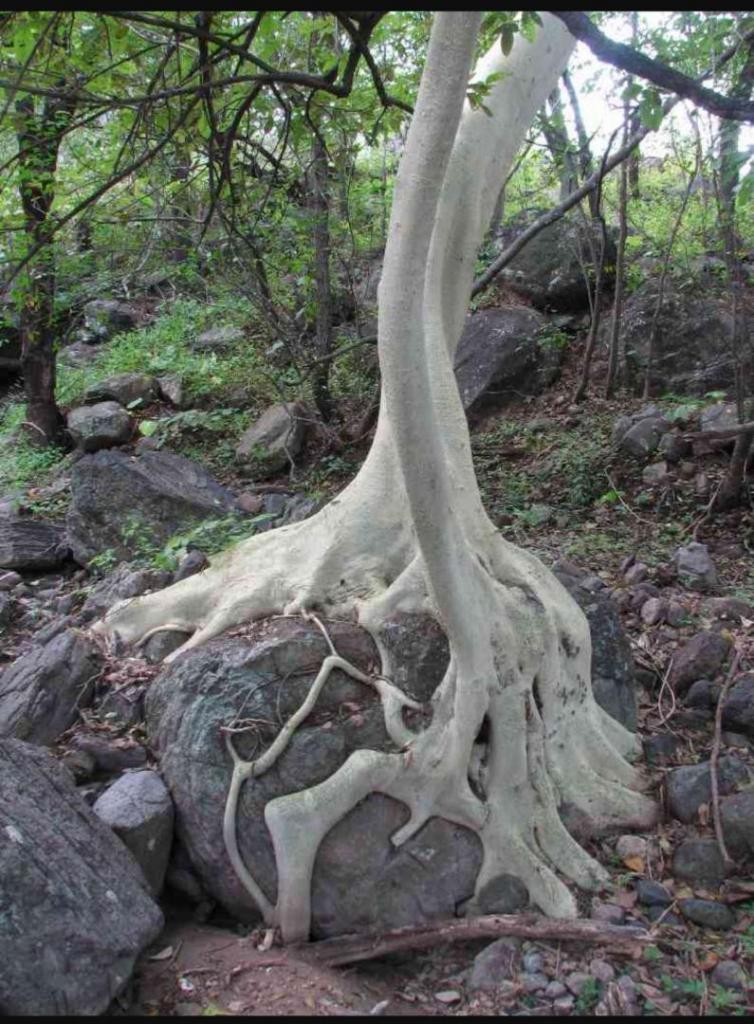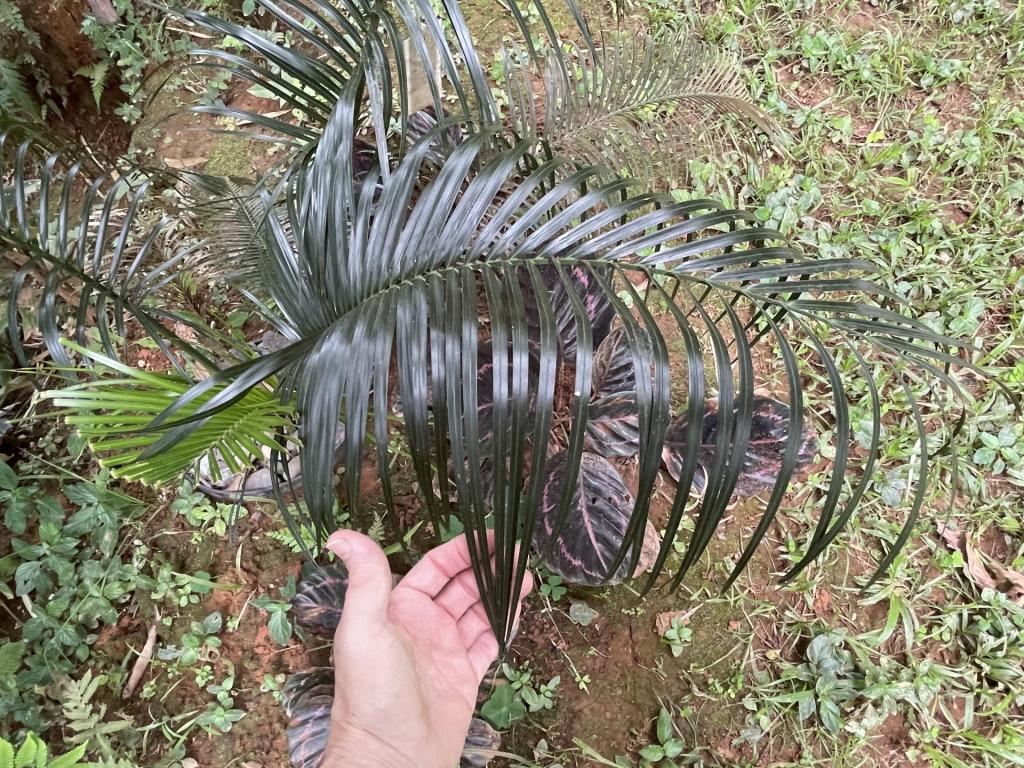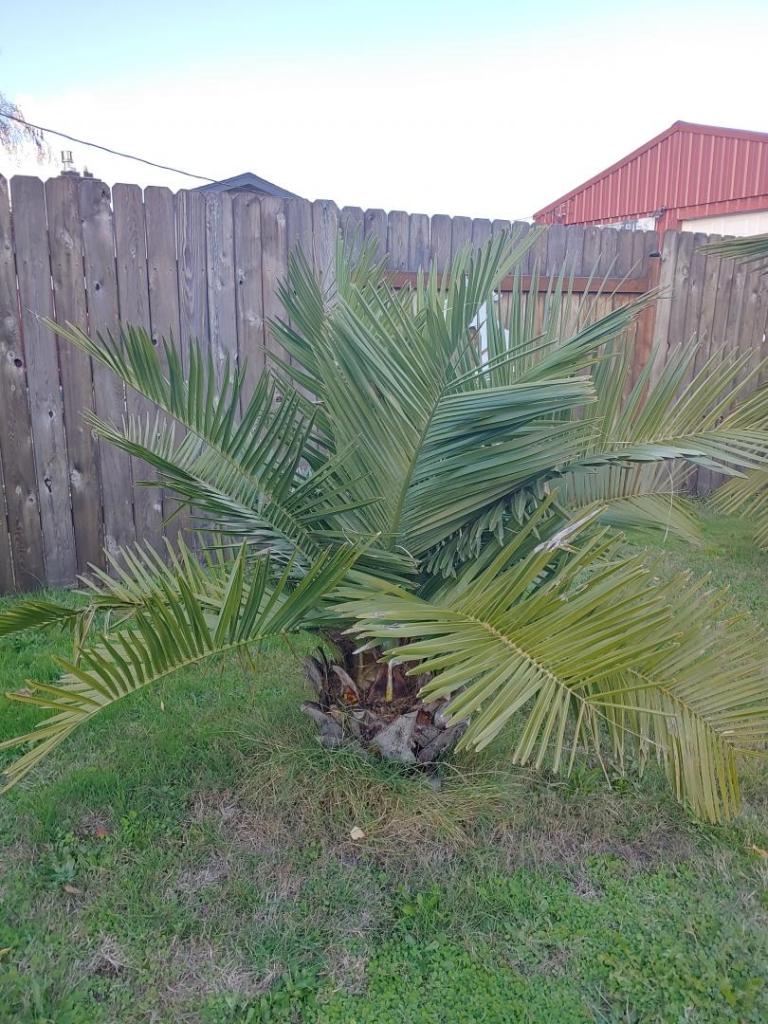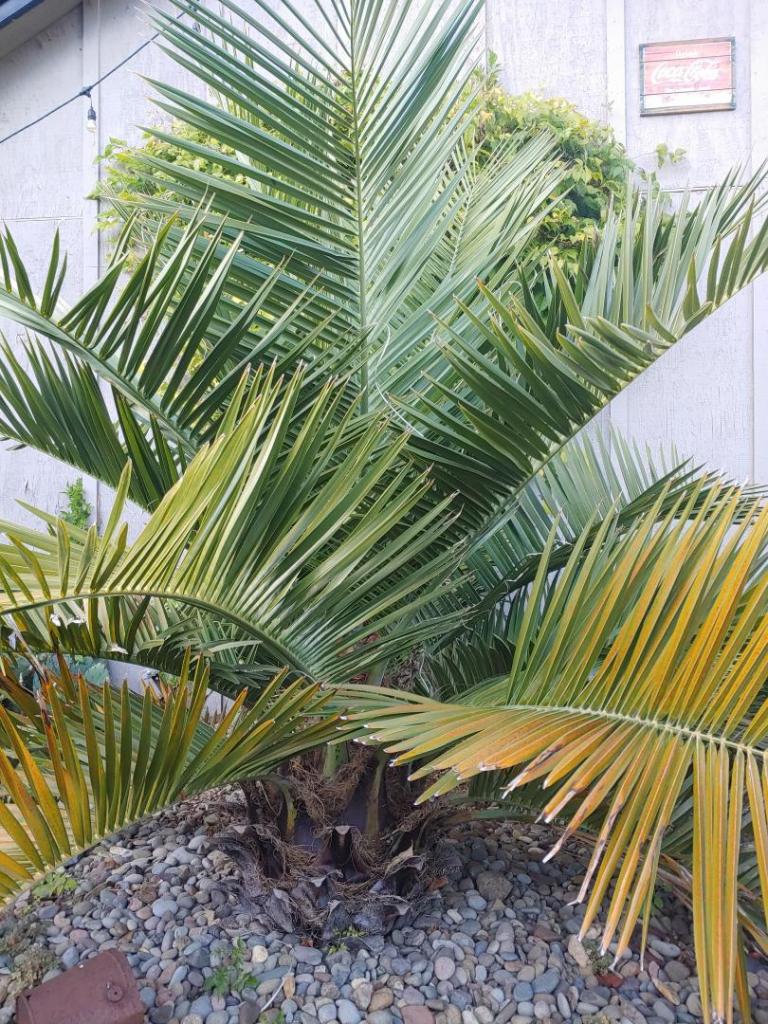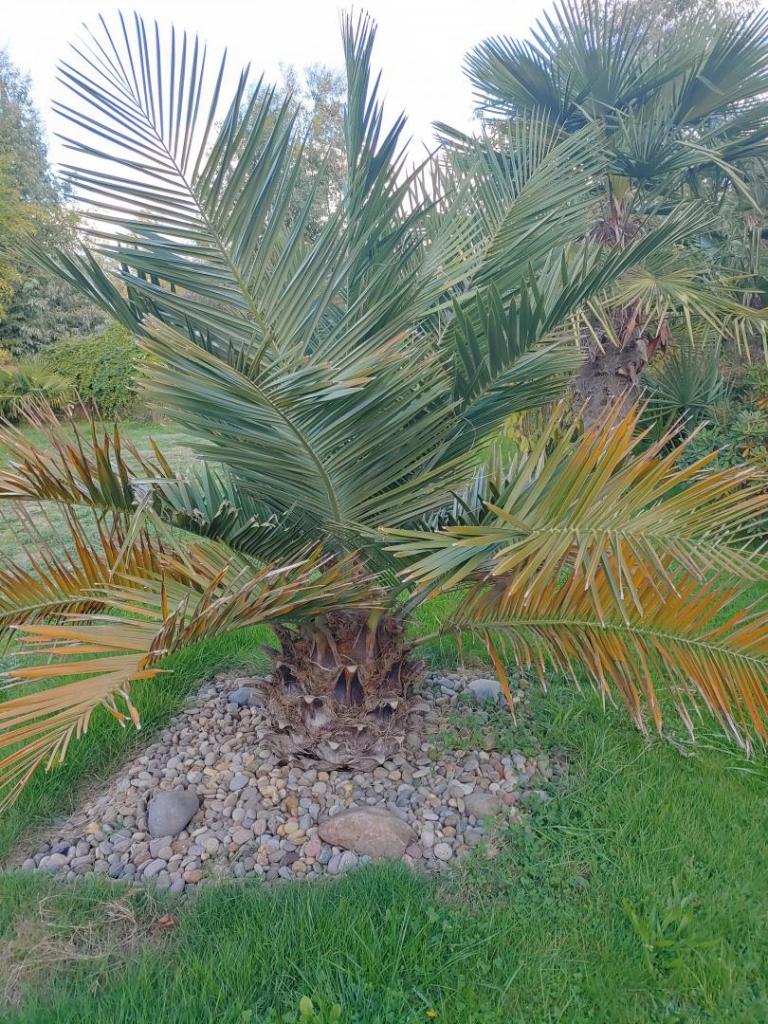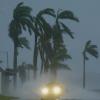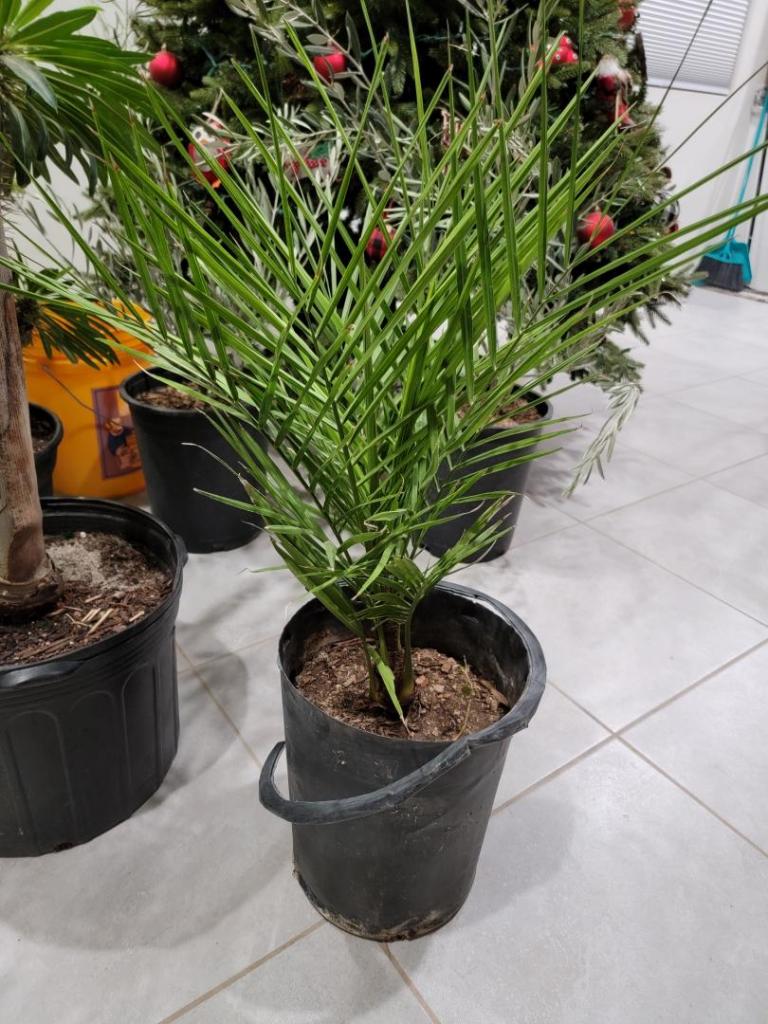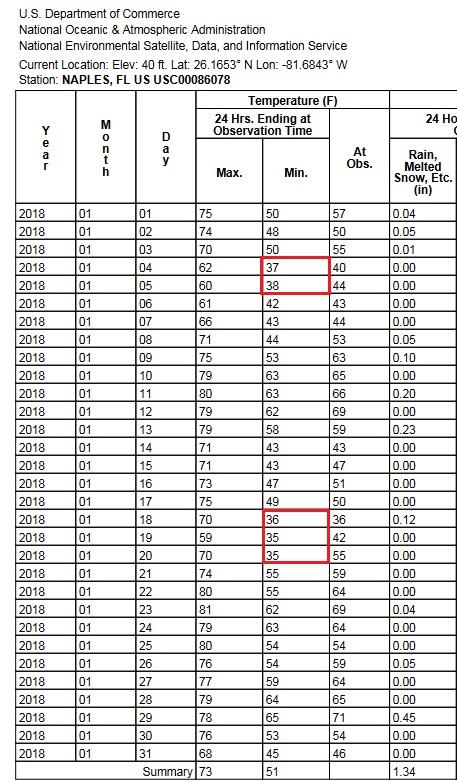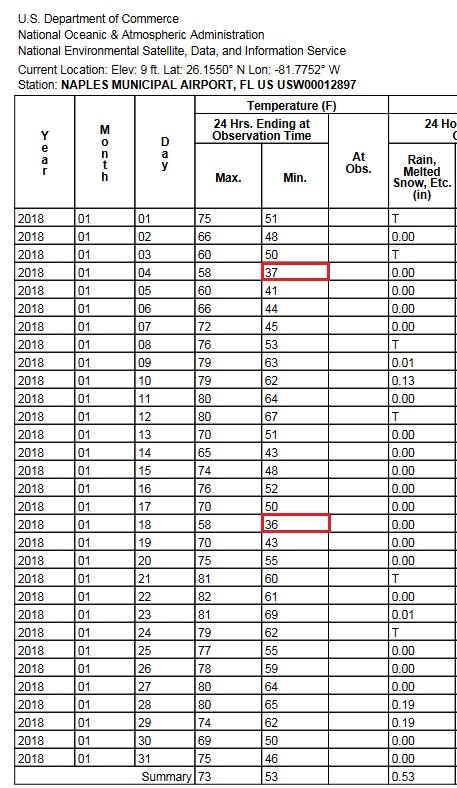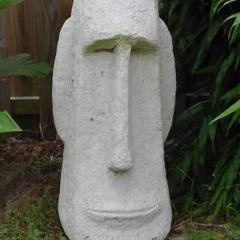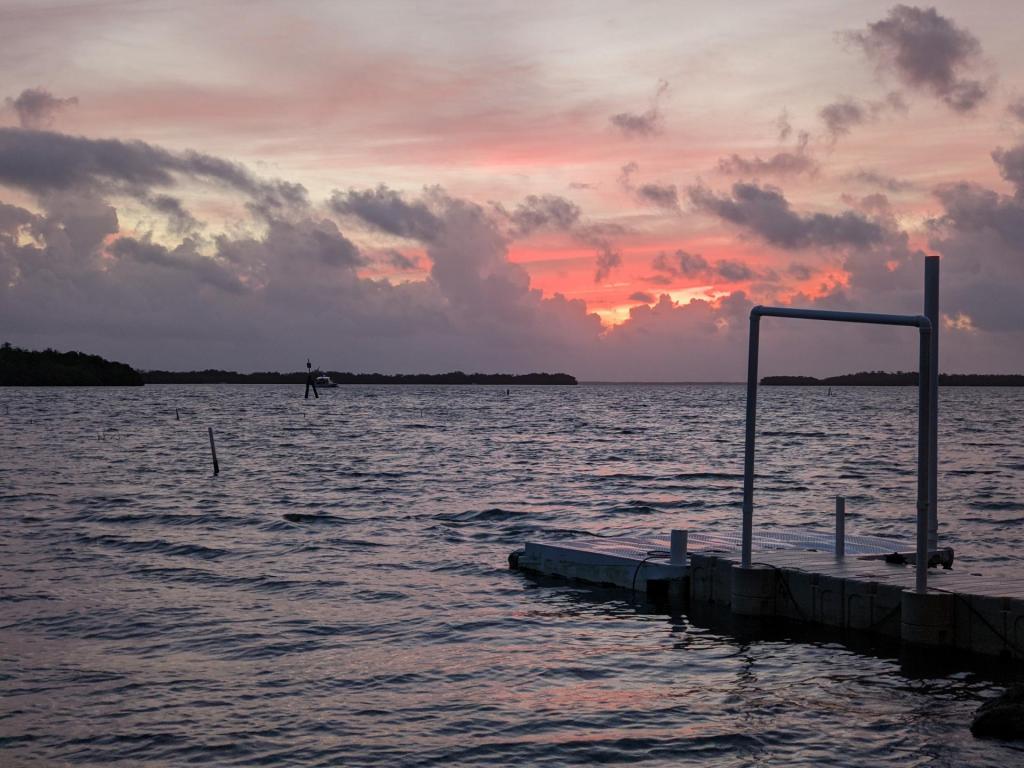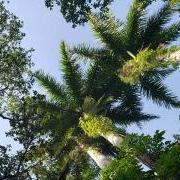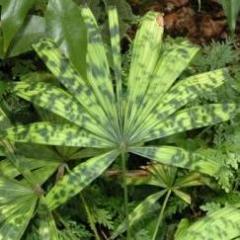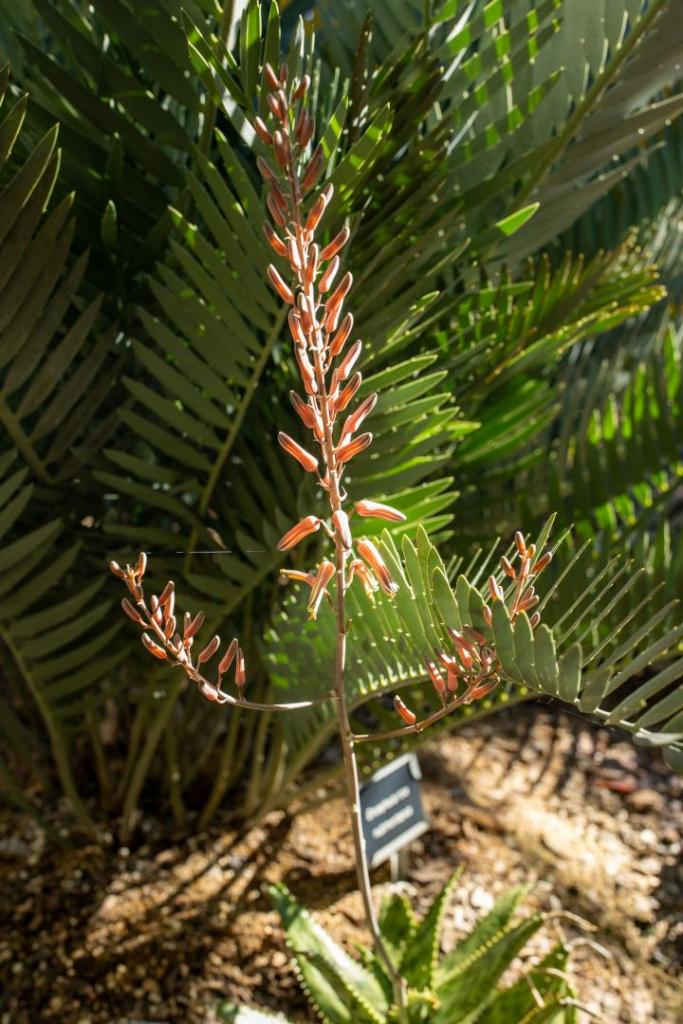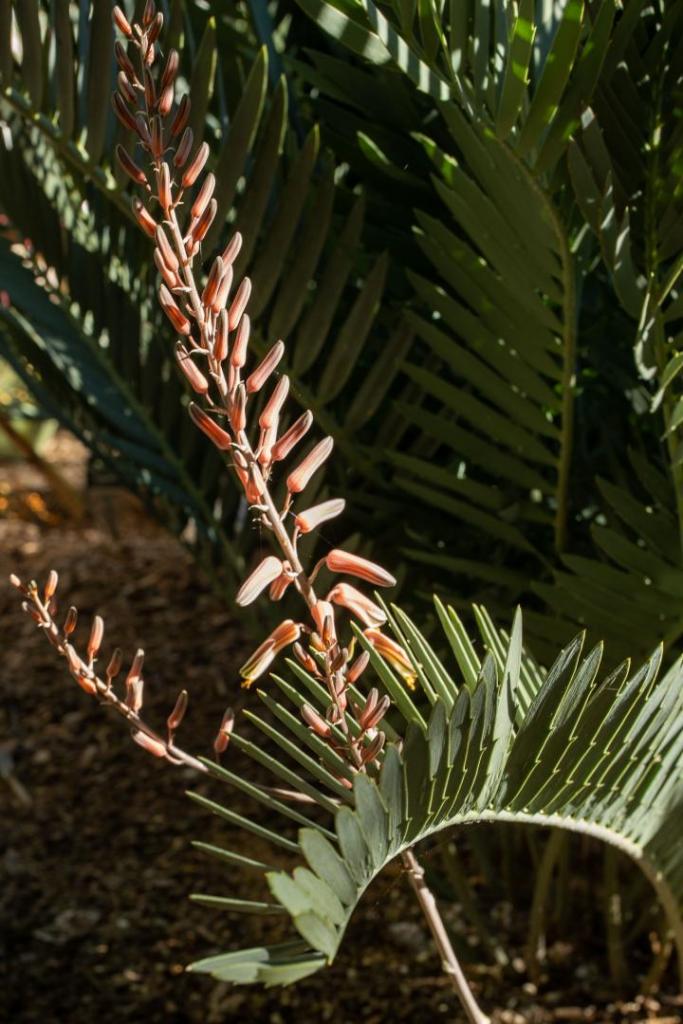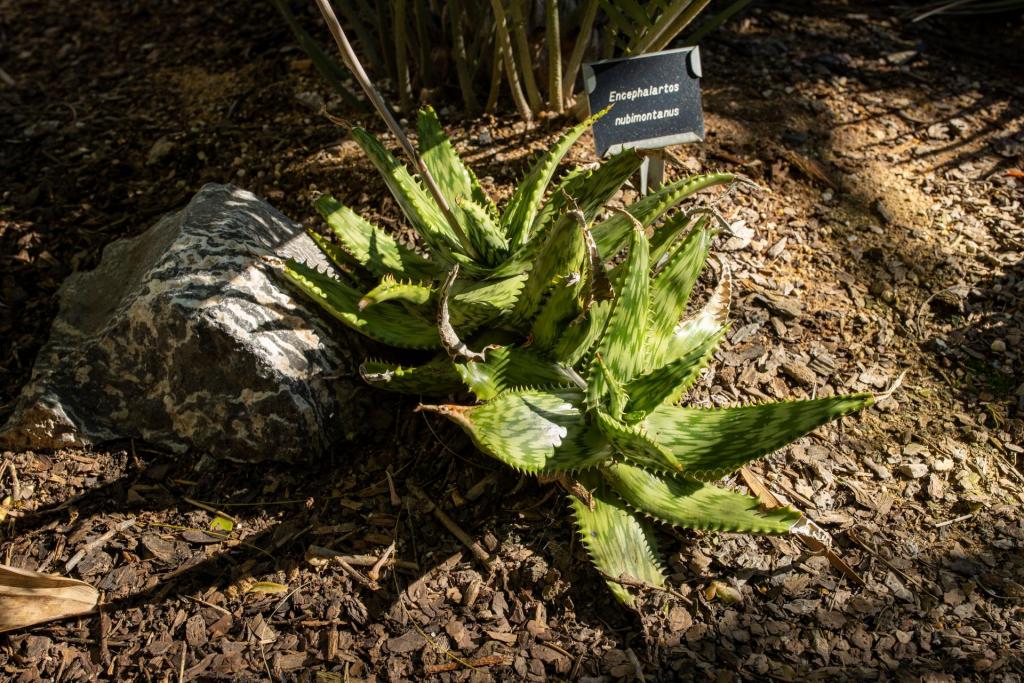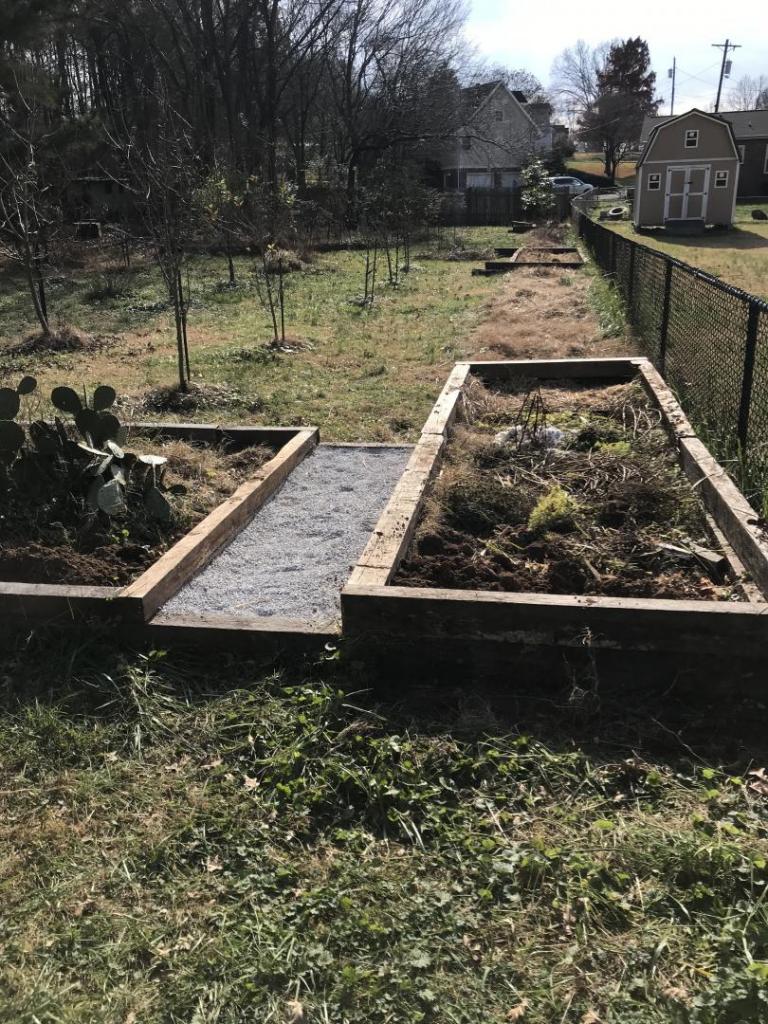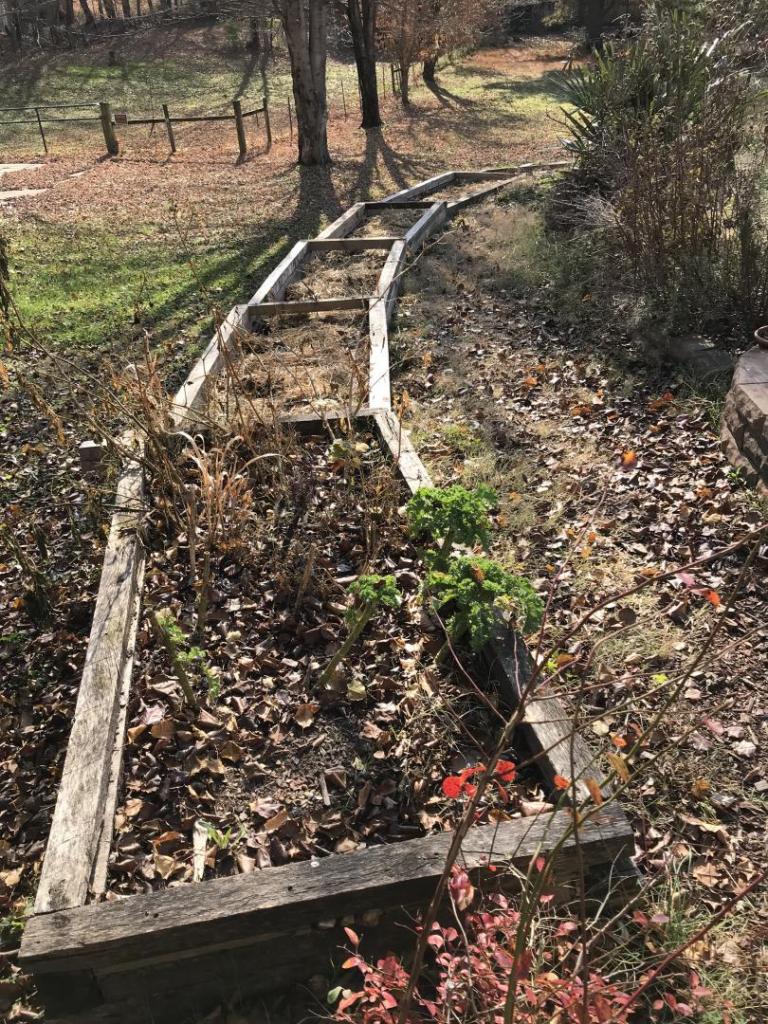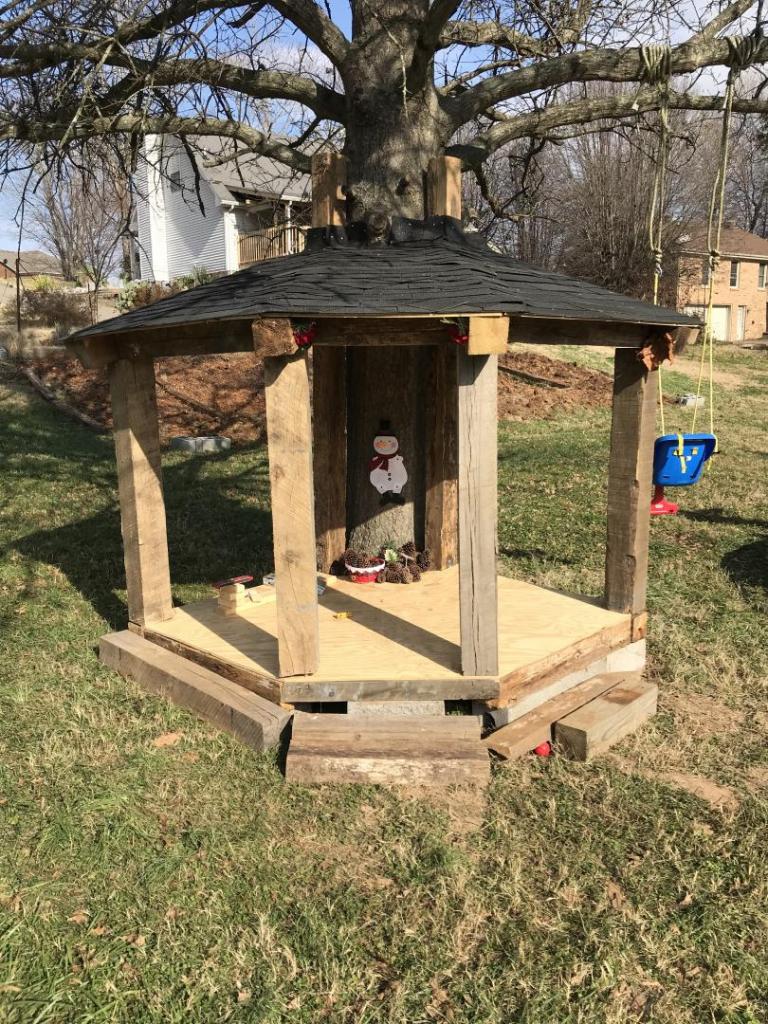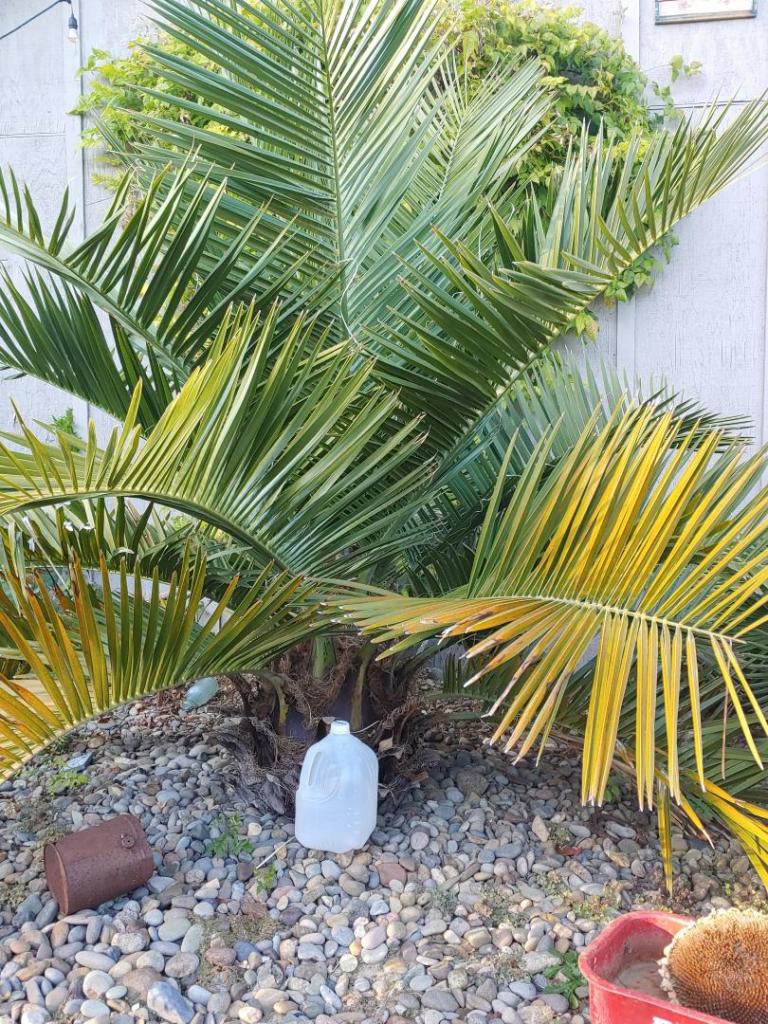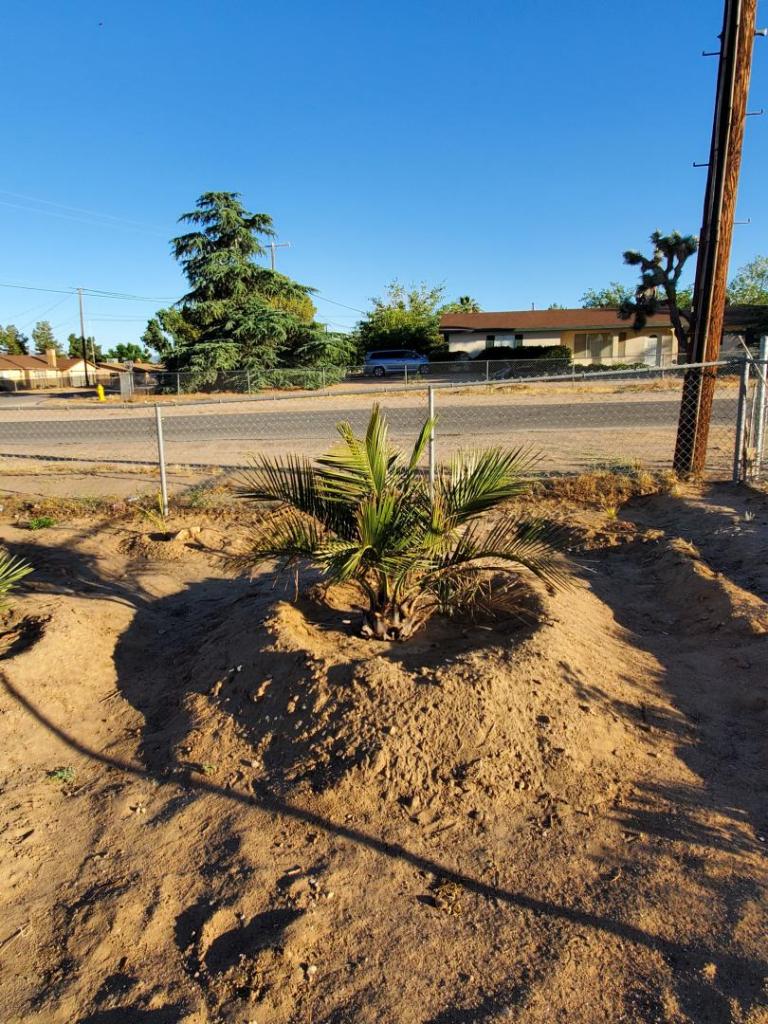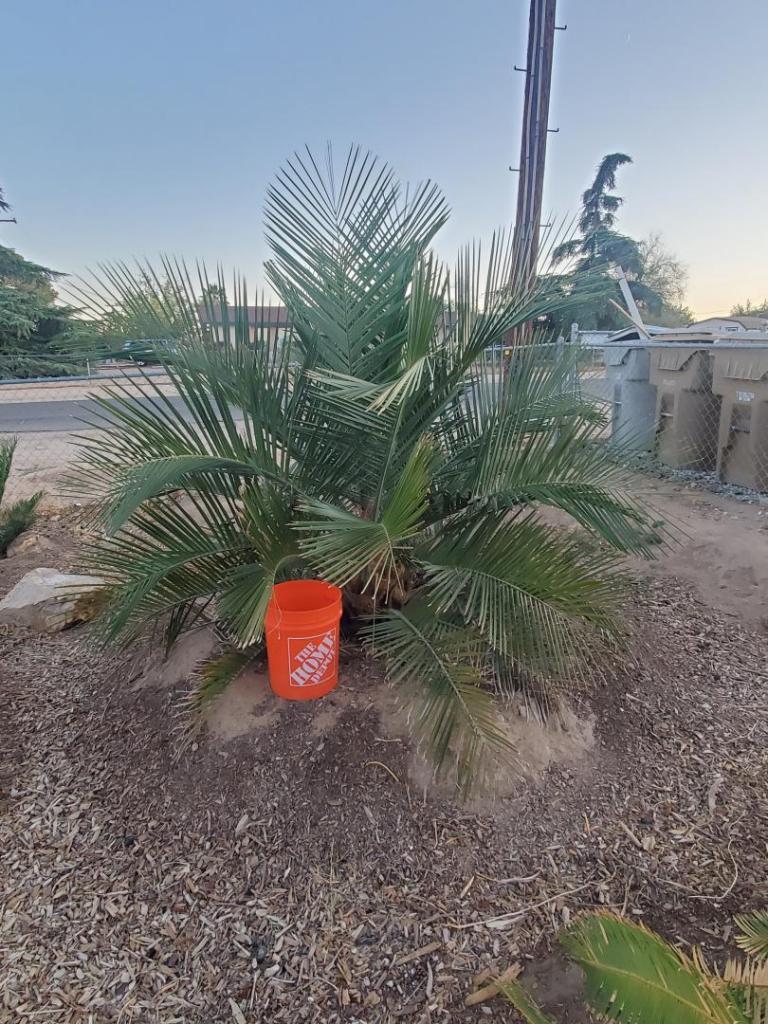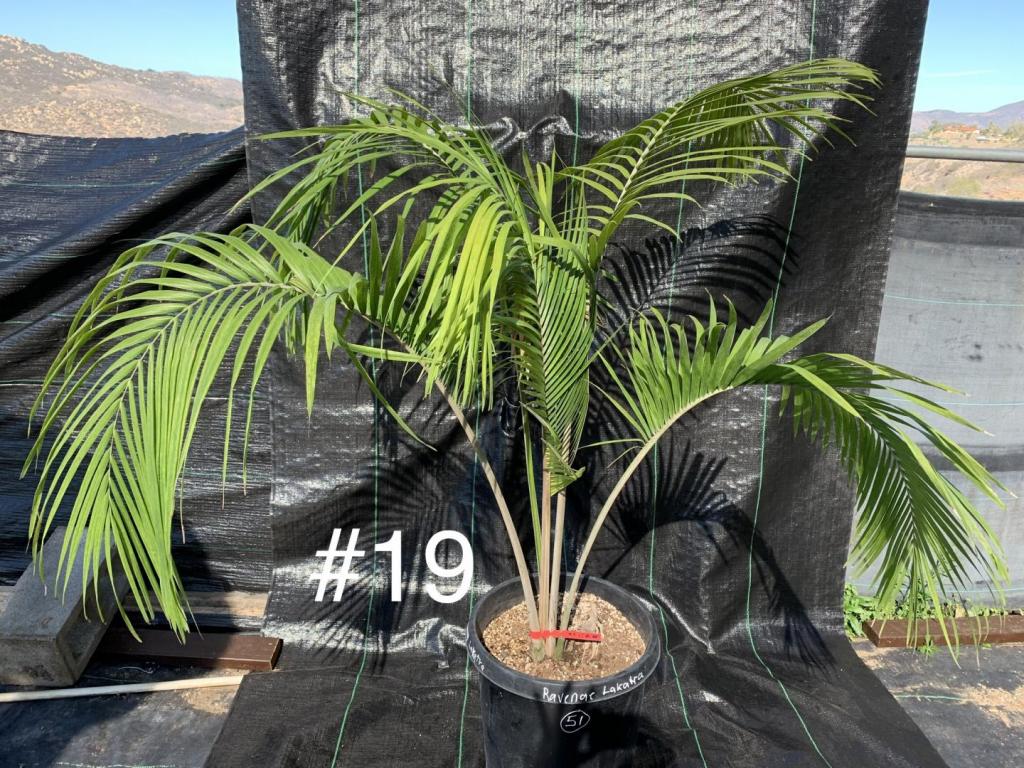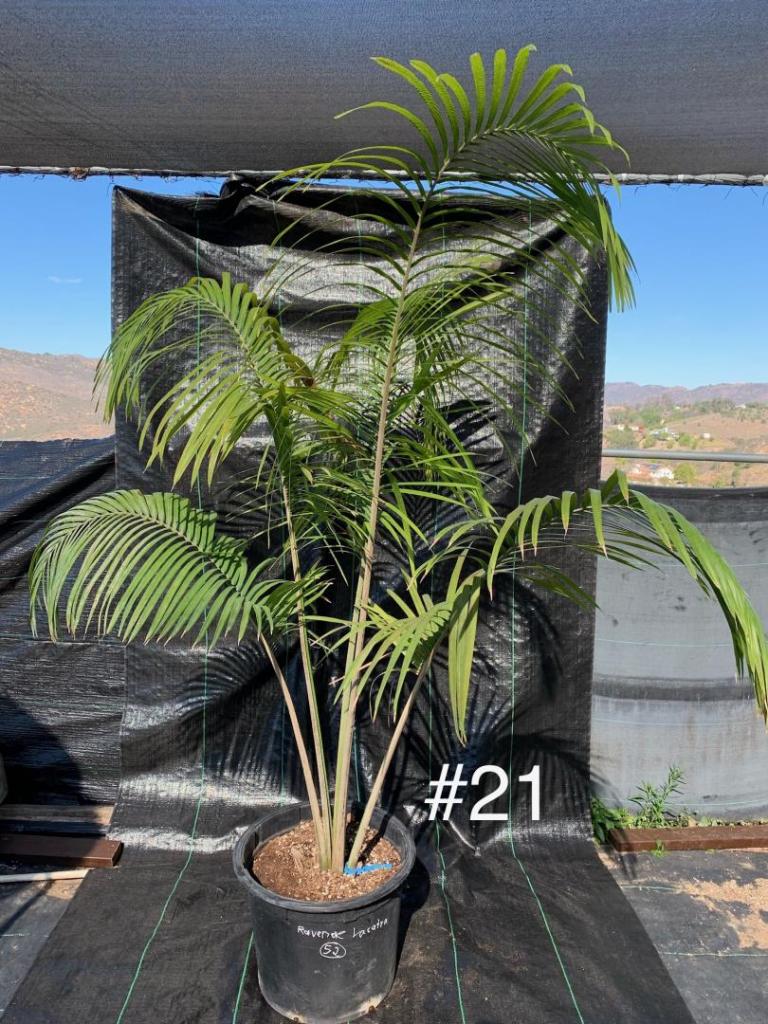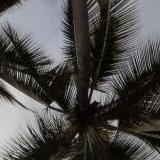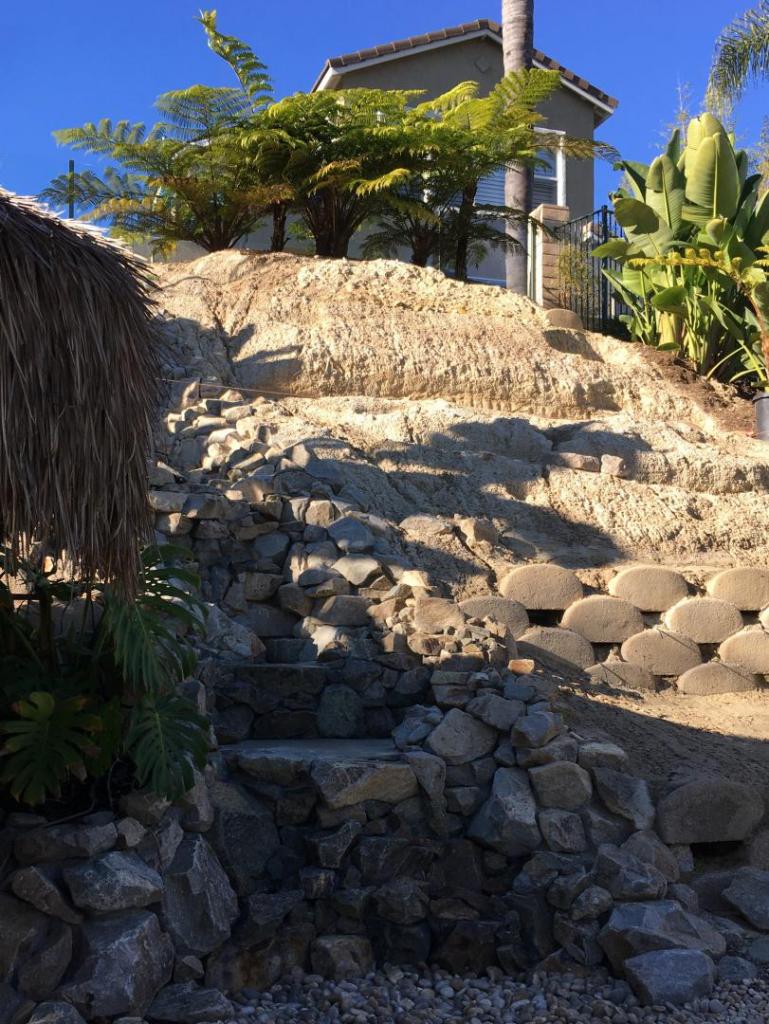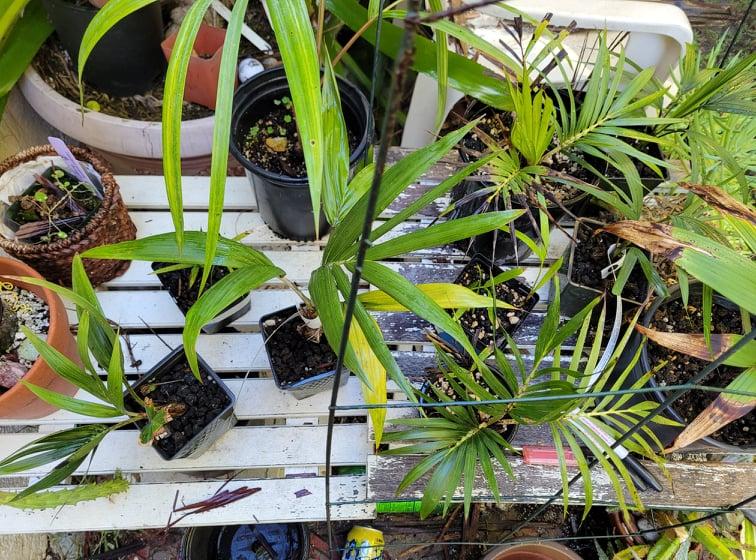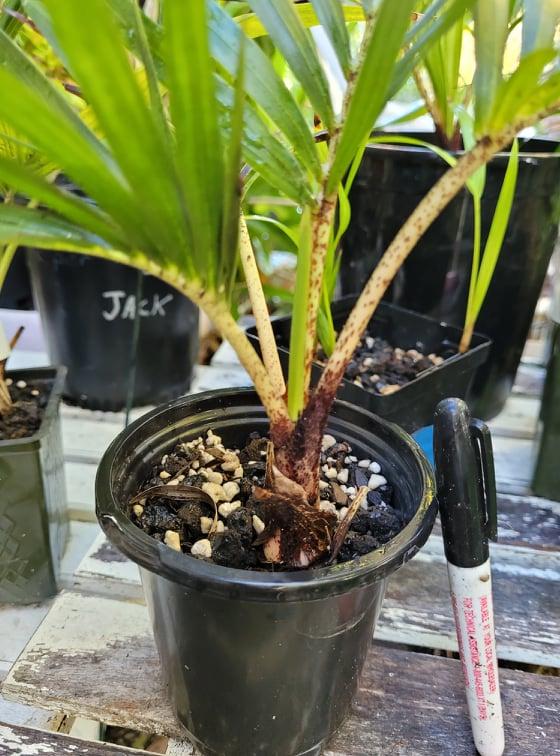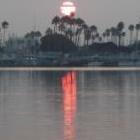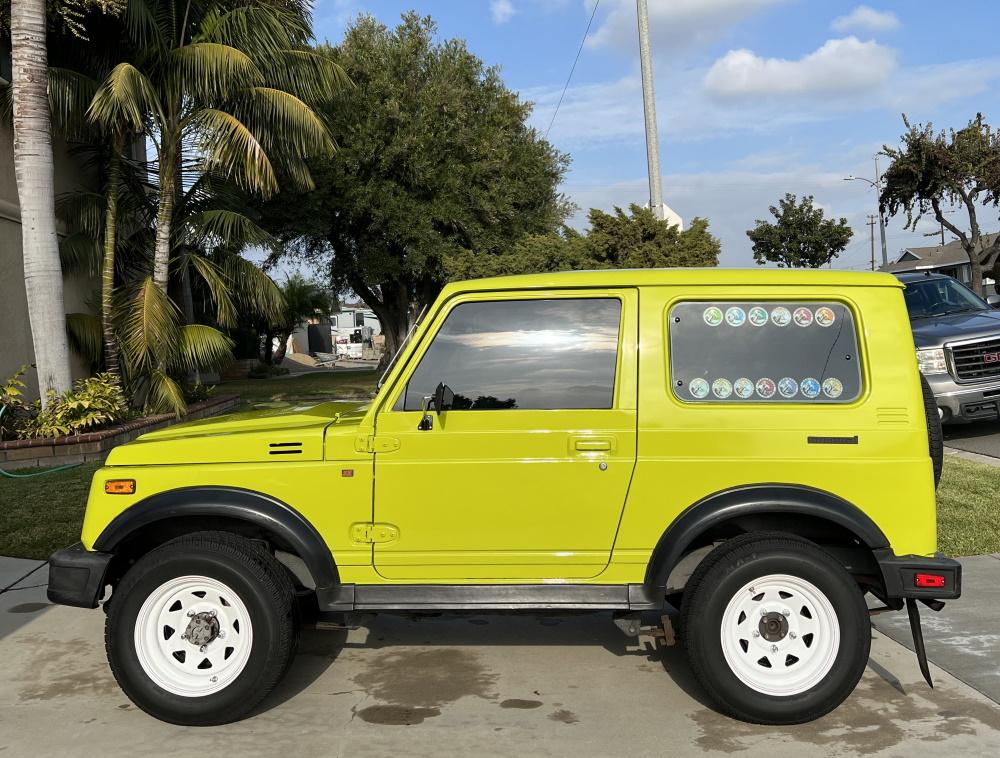Leaderboard
Popular Content
Showing content with the highest reputation on 12/20/2021 in all areas
-
Despite the fact that there are probably 1,000,000 W filifera within an hour radius of my house, I still love these palms and can’t get enough. I’m not even sure how many I have in my yard at present. Last year, a buddy of mine was removing some from his property - they didn’t like his soil, which was too sandy and located on a hill. They burned badly in the summer and never really got more than a few fronds at a time. He ripped them out of the ground with a chip truck, then I planted them in my yard. They looked like death for the first six months or so, but have since taken off and now they look fantastic. Well… we repeated this process last night again: I planted it right next to one of the ones we ripped out and replanted next year - now reunited in my yard: I am sure by June, it will look phenomenal!10 points
-
Mizell-Johnson State Park in southern Broward County Florida has roughly two miles of undeveloped Atlantic Ocean barrier island beach extending from Port Everglades Inlet to just north of Dania Beach Pier. I have been visiting this park for around 35 years. As long as there has been a beach here all sorts of things have arrived on the shore floating in from near and far including seaweed, trash and the occasional square grouper. Plant seeds frequently wash up and germinate. Coconuts have always been part of the mix here sprouting and thriving on their own and sometimes being assisted by humans. Coconuts have probably grown here since well before south Florida was developed. It has recently been decided that all the coconut palms must be eliminated from the park. For the last few weeks there has been cutting and chopping of hundreds of palms many of them several decades old. The coconuts have been singled out because they are not native. This is all part of the misguided campaign to rid all the state parks of any and all exotic species regardless of whether or not they are problematic. This mandate comes down from the ignorant bureaucracy in Tallahassee. I was told that apparently the previous park manager had resisted the push to cut down the coconuts but there is now a new manager who has acquiesced. In my opinion this is a ridiculous waste of resources. It does nothing beneficial but instead actually reduces the beauty and usefulness of the park. I wish people could move on from the flawed line of thinking that all exotics are always bad and all natives are always good. That is simply not true.6 points
-
Homo sapiens of Nordic ancestry are not native to Florida,4 points
-
I wonder if any consideration was given to the cocos participation in erosion control during big storms?4 points
-
Here are some examples of Florida taxpayer dollars productively working for the common good: This last one hurts the most. A dozen or so years ago I discovered it as a small sprout on the beach nearby. Knowing it would not survive long in that location near the hide tide line I relocated it to a higher spot in the dunes where it thrived. It had several feet of trunk and was starting to get a nice lean. It finally flowered last year. The current crop of fruit was looking like it would probably have been viable. Just one week before its slaughter I had noticed and commented to my wife about the fact that the palm had never had any of its fronds trimmed. All the leaves that this coconut had ever produced were either laying at its base or still attached to the palm. A week later it got the ultimate trim. This is all so terribly stupid and sad.4 points
-
4 points
-
A bit of a head scratcher for sure.. I mean if Coconuts have drifted to Florida shores ..from say the Cuba, the rest of the Caribbean / Yucatan for ..quite some time.. well before Europeans arrived .. interesting they'd be considered not native. Technically, because 99% of FL was underwater a few times, at some point in the past ..not much could be considered native ..long term anyway.. by that kind of thought. ..Can understand axing nasty stuff like Australian Pine, -'Bleepin- Brazilian Pepper, and Meleluca ..which were intentionally brought to FL, but eliminating Coconuts that essentially planted themselves? Seems a bit ..odd ..as though there has to be something else behind the motive.. They intend to do this state wide, eventually? Very off beat thinking, even for FL.3 points
-
Okay you see how that frond is pinched at the bottom and then the top half fans out. Mine do that exact same thing, no other Trachys in my yard do that. Like you I have over 40 Trachys and only the princeps seem to do this.3 points
-
3 points
-
One lowes here discounts orchids by 50% when finished flowering. That's when I buy and move them to my green houses and wait for them to flower again.3 points
-
I'm in Houston now but will be moving to Tampa-ish area next year. Going to be buying a bigger property for more room to play and one of my ultimate long-term projects will be to train a Ficus Petiolaris to grow over a boulder like the one pictured (not my photo). My question is, is this something I should start working on now? I was thinking about getting a small plant and starting it now by planting in a large pot with a slightly smaller pot upside down inside of it. This would essentially only leave the soil around the outer edges of the pot forcing the tree to start growing it's roots in the general shape I'll need to train it over a boulder. Make sense or waste of time?3 points
-
I am enjoying this topic and all the great photos! Thanks! I have only one and it was attacked two years in a row by the rhinoceros beetle, but happily it seems determined to live. I really like the cycad imitation look of this palm. One day I hope to have more or at least that my attempt at a three layer beetle barrier lets this palm grow bigger...3 points
-
3 points
-
My mistake. I saw somewhere that there was evidence of European DNA that predated the vikings in the middle ages that was found in North America.2 points
-
2 points
-
2 points
-
Differing opinions are great and can spur further thought on a topic, but, there's a difference.. in this case, Dude thinks oil exploration and mining are ok.. ( Sites like Oak Flat, and Rosemont ..Both sacred sites / important wildlife corridors here would be ok, by his logic.. ) He also cherry picked through various things to put together his view, ..and is a journalist.. who writes about environmental things ( his thoughts on them anyway ) ..He's not an ecologist.. There may be a few good " thoughts " in his view, ..that actual ecologists have also shared.. but if 99% of his content is ..a clunker, don't get scammed by it.. Fully embracing his view would be like standing on the corner w/ the annoying folk who protest with their megaphone across from the hospital here so often.. No one who actually thinks logically ..does their fact checking... would join them..2 points
-
2 points
-
2 points
-
Humans have a problem in that they tend to look at history in the space of at most a few lifetimes...a blip in terms of the history of our world, and even our relatively recent species. I was told by a "master gardener" type at the Key West Botanical Garden (I was buying "native" plants from her) that a native is anything that was in the Keys before the arrival of the English. I didn't want to get into a meaty argument with her (she being the type of snowbird that relocates permanently and suddenly and unbendingly knows all about their new home), but I had to shake my head at this attitude, which also bleeds into ongoing government attitudes about the arguably native/non-native green iguanas, which, like coconuts, have a very blurry origin in the Keys. One odd thing I have noticed in the Keys, where there is a really obsessive attitude in government about the control over planting and removal of plants...as an example, the silver buttonwood is a highly touted native in that it occurs naturally only in one tiny population, I believe in the Long Beach area of Big Pine Key or somewhere adjacent...and though of course this is a popular ornamental used for hedging and other purposes on a vast scale in South Florida due to man's intervention via the nursery industry, if I go to the nursery and purchase one, and plant it on my land, I am required to seek (and pay for) a permit to remove that "native" plant should I desire to do so in the future, even though I bought it, planted it, and it has never grown naturally on my area of Big Pine Key. There is such hysteria over plant removal permitting that the result now is counterproductive: when homeowners see a native plant sprouting or growing as a young plant or sapling, even in an area they might desire such a plant, they invariably rip them out before they are a few feet tall, with the logic that they would rather go to the nursery and buy something non-native, as they will never have to get a permit to remove something that is an "invasive exotic" (those two words apparently now permanently fused in Florida). As regards the destroyed coconut trees, I think a call to the Miami Herald along with those photos might be a step in the right direction. People by and large love coconuts and they are a defining element in south Florida. I remember that at least one city (might have been Miami) was going to ban all coconuts from municipal plantings due to the current hysteria, but a public campaign put a stop to the policy. A newspaper can make a big difference in alerting the public to such activities.2 points
-
Doesn't just about everything and everyone in Florida come from someplace else? What about that all them Fl. citrus?! None of them are "native".2 points
-
I've noticed the native plant movement in Florida suffers from a bit of tunnel vision. Up north a native plant or tree is generally agreed to be "anything native to the Eastern NA temperate forest ecosystem." Not many people would cut down a catalpa or osage orange in Ohio even though the "true" native range is a few states away. State lines are arbitrary political boundaries after all, and who knows how far native people spread plants outside of their natural ranges. But in Florida, there is a "FL native" movement that says a plant that is native to this state is always preferable to something from anywhere else. Now we have people who live in Miami are reverse zone pushing 9a plants from the panhandle while ripping out cuban or Carribean natives. Of course invasive species are a major problem in Florida and probably the best argument for planting native. As a tropical plant enthusiast I like to think of south Florida as a natural extension of the Caribbean however, and I'd like to see a broader acceptance of Cuban and Bahamian plants in particular as "semi-native". I also look at something like the hated brown anole and think, are they really so exotic? They travelled such a short distance to get here. Maybe they wouldn't be here without humans but their presence seems so inevitable and irreversible. At a certain point we have to accept that these things are here and will always be here. And the coconuts are much less distruptive to the ecosystem than the lizards are.2 points
-
That’s the same logic as saying monarch butterflies aren’t native to the U.S. because they overwinter in Mexico. If coconuts get washed ashore, germinate and grow without human assistance how exactly can they be an “exotic/ invasive”?2 points
-
Native is anything that may have blown in or washed ashore and taken root...especially Florida, which has even been underwater in the past. This is an absurd legislative decree, obviously voted in by those who've probably never visited nor care to visit . I live in Florida, so I'm allowed to complain.2 points
-
It is plainly obvious to most of us who have lived in southern Florida what constitutes a dangerous, truly invasive species (and I for one heartily agree with those you noted), versus those that are perhaps what one would consider non-endemic, non-indigenous (within whatever random timeframe we might assign), but naturalized, and that in other respects are either neutral in effect or beneficial toward the ecosystem in one way or another. Coconuts of course are one of the most valuable plants in the vegetable kingdom, providing (as noted previously) shoreline soil-binding, as well as shelter, building materials, fiber, food and drink (to humans as well as animals of all stripes), and also providing the immense and trouble-free gift of pollen for honey-bees and other insects. After Irma decimated our section of Big Pine Key, there was one heavily damaged coconut tree in front of our house that had opened an inflorescence, and that lone inflorescence was centrally important to bees, ants, and an anole, a little mini-ecosystem, and I witnessed that all three were sharing that tiny spot because there was little to nothing else to sustain them during those desolate weeks after the destruction occurred. Coconuts are documented growing wild in Florida at least back to the early 19th century, as noted by Audubon's friend, botanical explorer John Loomis Blodgett, who wrote a letter in 1845 about his discoveries in the wilds of far southern Florida: "Of Palmae, Cocos nucifera is certainly a native of Florida. I have found it in many places always near the beach or upon low mangrove shores of Islands." Before that, it is known that coconuts were all around the Caribbean for a good while, and indigenous peoples were no doubt trading them for many years, as it has been established that the species had arrived at the Pacific side of the isthmus sometime around 1200A.D. So the question becomes, when is something native, and why does that judgment have relevance if Mother Nature is always balancing and adjusting her ecosystems? And at this point, with the forests of the world being torched and mowed down, and our planet's carbon sink disappearing, is it ethical to cut down any plant that doesn't represent a real and present danger? As you point out, the Florida platform was well underwater and had no terrestrial plant life until those waters receded. When I get into these discussions with strident folks in the Keys, I usually arrest them by mentioning one true and overwhelming native in the Keys, Acropora cervicornis. I then always have to mention that I'm referring to the staghorn coral that lived on that ground (and still lives just offshore)...and though an animal and not a plant, the main "landscape element," far longer than any of the plants we see today. The whole situation is exasperating and unfortunately it is always the most loud and aggressive, rather than the most knowledgeable or wise, who wind up running the show...and are incapable of seeing the "big picture" that in the end affects the lives of every creature that calls that place home.2 points
-
Yes I have a couple Jubaeas outside. @Hutch has far more impressive specimens than me. I have seen photos of others in Portland in private gardens that are a decent size as well. Plus there are photos in here of some larger ones in Seattle. I am currently growing out some Blue ones from California. Right now I can’t tell the difference from the standard but it may take time for it to show up.2 points
-
I don’t have a horse in the race but many people believe Jubaea is more cold tolerant. Speed seems to be about even in our climate, and Jubaea seems to handle our wet winters just fine. With all this rain this year I’m expecting a lot of spotting on the Butias. Wish the rain would just shut the F off. It’s screwing up my fishing as well. Swollen rivers and terrible crabbing.2 points
-
I'd play devil's advocate and say... Butia= more wet tolerance (and speed of growth), especially if they could add B. eriospatha? Both are fairly cold hardy though, and Jubaea is bigger!2 points
-
Well it seems whinging pays off. A big storm from came through just after midday today. We were getting wind gusts to 96 kph along with torrential rain. In 15 to 20 minutes there was 39mm rain but then it slowed and is just a steady drizzle now. Severe Thunderstorm Warning - Darwin City and Outer Darwin for DAMAGING WINDS and HEAVY RAINFALL For people in Bynoe, Cox Peninsula, Litchfield, Palmerston and Darwin areas. Issued at 1:31 pm Monday, 20 December 2021. STRONG LINE OF STORMS MOVING TOWARDS DARWIN The Bureau of Meteorology warns that, at 1:15 pm, potential severe thunderstorms were detected on the weather radar near Dundee Downs, Acacia Hills, Darwin River Dam and Manton Dam. These thunderstorms are moving towards the north to northwest. They are forecast to affect Dundee Beach, Berry Springs, Middle Point and Tumbling Waters by 1:45 pm and Humpty Doo, Noonamah, Middle Arm and the base of Cox Peninsula by 2:15 pm. Damaging winds and heavy rainfall that may lead to flash flooding are likely.2 points
-
I immediately thought of lady palms like @oasis371 has suggested. I have two in the ground Don’t forget about Howea they are pretty tough palms in shade of course. FYi @oasis371we grow many Sabal species in the PNW without issue. They don’t grow as fast as in the SE but I wouldn’t consider them slow. Some are better than others with hybrids appearing to be the fastest. If a palm flowers and sets seeds I consider them to be thriving. I have 6 species in the ground that over winter without protection and 4 more species in pots that I feel confident will do well. Just waiting for them to get a little bigger.2 points
-
2 points
-
Um, no. My comment was merely an attempt at humor. Considering that grandpa wields a mean pick axe and the forestry service is struggling to control the invasive palmettos I thought they might appreciate some assistance. That's all. And stop calling me Shirley...2 points
-
I don’t know what you’ve got out there, but I do get random emerging spear/bud attacks here by some sort of solitary caterpillars, and my bottle’s new spear got mauled up last month, and some sort of scarab beetles started coming out of it- or pitching in… I’m not sure which. I’ve only ever seen one crammed in there, but they maul the emerging spear, leaving saw dust, droppings, and damage in their wake. New leaves open withered, yellow and damaged. Now when I see it, I drench it with insecticide, then follow that up in a week with peroxide and copper, and that seems to stop the madness right away. Not sure if you have the same issue though.2 points
-
I've never been able to keep 3 gallon size crinita alive more than 3 years,under my desert conditions. Problem seems to be cool temperatures,combined with our wet winters.Spears would pull in the spring,and it either recovered for another year,or died.Killed 3 of them and gave up. Coccothrinax borhidiana has very similar looks but seems to be much hardier. I currently have 4 purebred in the ground and 2 hybrids. Never lost any borhidi's... aztropic Mesa,Arizona2 points
-
2 points
-
2 points
-
Here’s some of the raised beds I need to finish filling. I use as much yard waste, kitchen scraps, there’s scrap pieces of wood in there, branches, leaves, and I just put a few bales of straw in all of these. Basically create an in place compost pile, and save on having to fill the beds with just bagged soil bought from the store. The first pic of those 3 in a line down the fence was a continuous lower bed down the entire 220’ fence, the weeds and Bermuda grass will take over anything here. So tore up a bunch and reused to build these three taller beds (much more manageable). This is a series of cascading curved raised beds I finished a few months ago. Really happy with the way these turned out. Completely built out of scrap wood we use to load steel on our trucks at work. Here’s the start to a treehouse for my son. Just got him a little ground level hut right now, I’m going to keep adding on and go vertical as he gets older. My daughters who are all in their teens are not happy they didn’t get one when they were little by the way lol2 points
-
2 points
-
2 points
-
1 point
-
A lot of places have been 11a if you only look at the past 11 years. I’ve looked pretty hard before to see if there was somewhere that might be 11a, but it really didn’t look like it. If memory serves AMI, Sanibel/Captiva, and Marco Island we’re all roughly the same. Downtown Naples might have a slight edge, but probably still below the 11a threshold. I’m sure once you go further south into the Everglades it moves to z11, but it doesn’t really matter since it isn’t inhabitable.1 point
-
Nice looking Jubaea! I just germinated some blue Jubaea seeds that I got from RPS a few months ago.1 point
-
1 point
-
Sad indeed -sigh- I would sneak in some Pseudophoenix, wonder what they would do about that.1 point
-
The needle palm, Rhapidophyllum hystrix, is no problem for you as to cold hardiness and shade. I would try to get the largest you can find and give it at least 4 x 4 foot mature grow space or larger ( they get at least 6x6 in the south). In the southeast they usually get some winter sun because of growing in deciduous cover, but I am sure they do not all get winter sun.1 point
-
Thanks! I see you found my other photos in the Desert Garden Beaverton post... in that post, the other large Yucca (blue) is A. americana var. protoamericana, from PlantDelights, back when they actually had a good selection of hardy Yuccas and Agaves. Don't know why they stopped offering most of them. Yuccado's offerings are long gone too... ah the good ol' days. Cistus is probably the best bet for those plants now; I suspect many originally came from PlantDelights. Yeah I wanted my wife to photo me next to some plants, to get better size comparison, then realized I couldn't really get close to them easily-- too crowded. PS- the Yucca schottii was very fast growing, trunked within a few years! The secondary branch off the base is only 3-4 years old.1 point
-
Faster growing palms will always be cheaper, that's OK. I am not certain about this, but I believe that 'big box' stores don't actually purchase the inventory, and that the financial risk remains with the grower. That's not OK. If the palms don't sell, it is the grower. not L or HD that suffers the loss. Can anyone confirm this ?? This is just an additional reason why I do not patronize these stores.1 point
-
Thought you'd get a kick out of our strategic fern placement. Our hill is under construction, with most of the new plants going in this Spring. But we took a moment two Springs ago to plant some Australian Tree ferns at the top of the hill. We prioritized those plants after we learned that the home above us was being sold... wanted to get them in before the new neighbors moved in, so as not to offend. Hoping they'll grow REALLY tall, then we can put a second layer of ferns (or something else) beneath them. We still need something tall for the right corner (open to suggestions... ideally something in a color other than medium green). The front three ferns are the "rough" version (Cyathea australis), with the center one splitting into a double. Then there are two "lacy" (Cyathea cooperi) ones behind those. We were a little worried about them getting so much sun (they're in direct sun in this photo, but are in shade part of the day). Not the best placement, but they've done pretty well over both summers... as long as we give them lots of water. Hoping they'll provide some needed privacy, and help set a tropical mood. Many more tropical plants to come soon (you won't see any of the "bricks" a year from now).1 point
-
1 point
-
New (35yr old) Suzuki Samurai I just bought to tow behind my motorhome.. Great little 4wheel drive vehicle for tooling around in the So Cal deserts, or making grocery runs while camping... It rides like a conestoga wagon, so my wife and I might need a couple of kidney belts though... Now to out fit it for towing... Butch1 point




